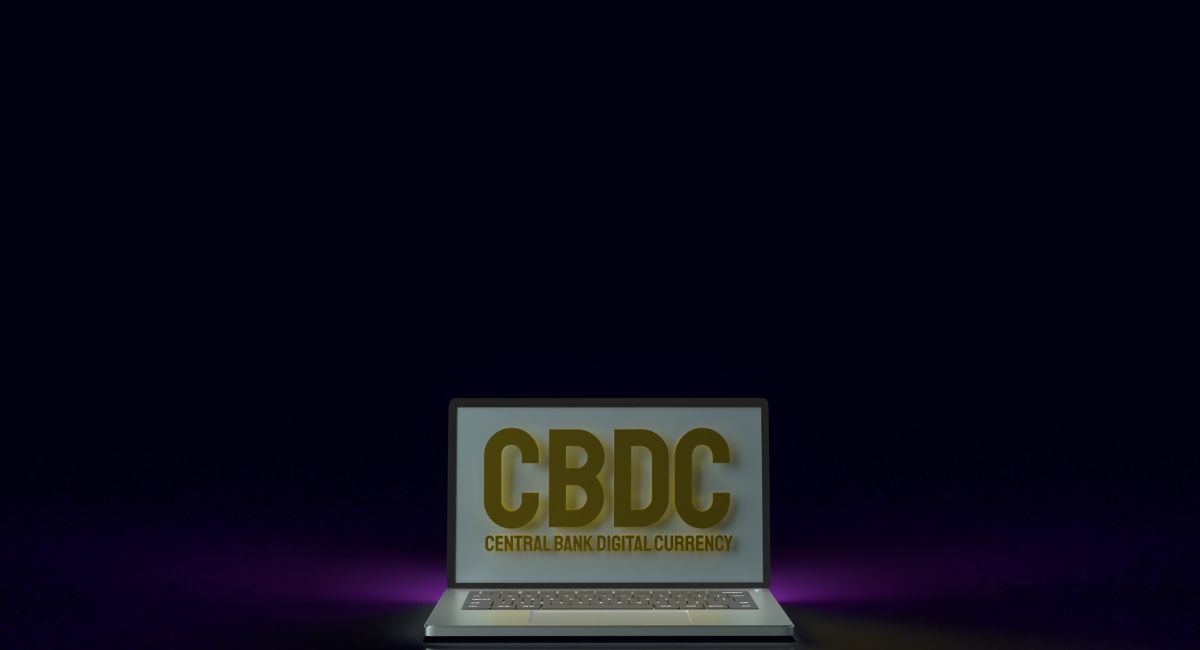Top 10 Intriguing Things That Make CBDC Primary Catalyst For Digital Identities
A Central Bank Digital Currency (CBDC) is a digital form of a country’s national currency issued and regulated by its central bank. Unlike traditional physical currencies such as banknotes and coins, Central Bank Digital Currency exists in electronic or digital form, operating on a blockchain or other distributed ledger technology. Central Bank Digital Currency is considered legal tender, and its value is tied to the national currency it represents.
CBDCs serve as a digitized representation of a nation’s official currency, providing a secure and government-backed digital alternative to physical cash. The development and issuance of Central Bank Digital Currency are driven by various factors, including the need to adapt to a rapidly evolving digital economy, respond to the rise of private cryptocurrencies, and enhance the efficiency of payment systems.
There are two main types of CBDCs:
- Retail CBDC:
- A retail CBDC is designed for the general public and businesses, providing them with direct access to a digital form of the national currency. Individuals can use retail CBDCs for everyday transactions, just like traditional currency. This form of CBDC aims to enhance financial inclusion by offering a digital currency accessible to a broader population.
- Wholesale CBDC:
- Wholesale CBDC is intended for financial institutions and central banks. It is used for interbank transactions, settlements, and other financial operations between financial entities. Wholesale CBDCs primarily target improving the efficiency of the financial system and streamlining processes within the banking sector.
The implementation of CBDCs involves leveraging advanced technologies such as blockchain to ensure secure and transparent transactions. CBDCs offer central banks greater control over monetary policy, increased financial system efficiency, and the ability to address challenges posed by private cryptocurrencies and evolving payment landscapes.
The development of CBDCs is a complex process involving considerations of technological infrastructure, regulatory frameworks, and monetary policy objectives. Various countries are exploring or piloting CBDC projects, contributing to ongoing discussions about the future of money in the digital age.
Also, read- Shaping The Future With Top 10 Goals of Central Bank Digital Currencies (CBDC) In The Coming Years
Importance of Central Bank Digital Currencies

The importance of Central Bank Digital Currencies (CBDCs) lies in their potential to address various challenges, capitalize on opportunities, and contribute to the evolution of the financial landscape. Here are key aspects highlighting the importance of CBDCs:
- Modernizing the Payment System:
- CBDCs can modernize and streamline the payment system, offering faster and more efficient transactions. By providing a digital alternative to physical cash, Central Bank Digital Currency can enhance the overall speed and convenience of payments, benefitting businesses and individuals.
- Financial Inclusion:
- Central Bank Digital Currency has the potential to promote financial inclusion by providing a digital currency accessible to a broader population. People without access to traditional banking services can use Central Bank Digital Currency for financial transactions, reducing barriers to entry into the formal financial system.
- Addressing the Rise of Private Cryptocurrencies:
- The emergence of private cryptocurrencies, such as Bitcoin and stablecoins, has prompted central banks to explore Central Bank Digital Currency as a regulated and controlled alternative. Central Bank Digital Currency allow central banks to maintain authority over the monetary system while responding to changing consumer preferences.
- Enhancing Monetary Policy:
- CBDCs provide central banks with new tools for implementing monetary policy. Programmable features of CBDCs allow for more direct control over money supply, interest rates, and other monetary policy instruments, enabling a more nuanced approach to economic management.
- Reducing Transaction Costs:
- CBDCs can reduce transaction costs associated with traditional payment methods and cross-border transactions. The use of digital currencies can lead to cost savings for businesses and individuals, particularly in the context of international trade and remittances.
- Mitigating Risks Associated with Physical Cash:
- The use of physical cash comes with various risks, including counterfeiting, theft, and the need for secure storage. CBDCs mitigate these risks as they exist in digital form, providing a secure and traceable means of conducting transactions.
- Strengthening Financial Stability:
- CBDCs can contribute to financial stability by providing a more stable form of digital currency compared to certain volatile private cryptocurrencies. Central banks can use CBDCs to address systemic risks and enhance the stability of the financial system.
- Adapting to Changing Consumer Behavior:
- As consumer behavior shifts towards digital and electronic payment methods, CBDCs allow central banks to adapt to these changes. Providing a digital currency aligns with the preferences of a technologically savvy population and ensures that central banks remain relevant in the evolving financial landscape.
- Enabling Innovation in Financial Services:
- The introduction of CBDCs can stimulate innovation in the financial services sector. Fintech companies and developers can build new financial products and services on top of CBDC platforms, fostering a more dynamic and competitive financial ecosystem.
- International Trade and Settlements:
- CBDCs have the potential to simplify and expedite international trade and settlements. By providing a digital currency for cross-border transactions, CBDCs can reduce the complexities and delays associated with traditional settlement systems.
Central Bank Digital Currency Adoption

Central Bank Digital Currency adoption is driven by a range of factors, and the primary catalysts for the development and implementation of Central Bank Digital Currency can vary across different countries. However, several common catalysts can be identified:
- Digitalization of Payments:
- The shift towards digital payments and the declining use of physical cash are significant catalysts for Central Bank Digital Currency. As more transactions occur electronically, central banks aim to provide a secure and efficient digital alternative to traditional currency.
- Rise of Cryptocurrencies:
- The emergence and popularity of cryptocurrencies, such as Bitcoin and Ethereum, have spurred central banks to explore digital currencies. The growing interest in decentralized digital assets has prompted central banks to consider Central Bank Digital Currency as a controlled and regulated alternative.
- Financial Inclusion:
- Central Bank Digital Currency is seen as a means to enhance financial inclusion by providing access to a digital currency for individuals who may be excluded from the traditional banking system. Central Bank Digital Currency can potentially reduce barriers to entry, allowing more people to participate in the digital economy.
- Payment System Efficiency:
- Central Bank Digital Currency can improve the efficiency of payment systems by enabling faster and more cost-effective transactions, particularly for cross-border payments. Central banks seek to leverage the benefits of blockchain and distributed ledger technologies to enhance the overall efficiency of the financial system.
- Monetary Policy and Control:
- CBDCs offer central banks greater control over monetary policy. By having a direct and programmable influence on the digital currency, central banks can implement monetary policies more effectively, including tools for interest rate management and money supply control.
- Counteracting Private Cryptocurrencies:
- The proliferation of private cryptocurrencies and stablecoins, which operate independently of traditional banking systems, has led central banks to consider CBDCs as a way to maintain control over the monetary system and mitigate potential risks associated with unregulated digital currencies.
- Response to Changing Payment Landscape:
- CBDCs are a response to the changing dynamics of the payment landscape, including the rise of alternative payment providers and fintech innovations. Central banks aim to stay ahead of these changes and provide a sovereign digital currency that aligns with regulatory frameworks.
- Enhanced Security and Transparency:
- CBDCs can offer improved security and transparency compared to traditional forms of currency. The use of blockchain or distributed ledger technology ensures a tamper-resistant and traceable transaction history, reducing the risks associated with fraud and illicit activities.
- Technological Advancements:
- Advances in technology, particularly blockchain and distributed ledger technologies, provide central banks with the infrastructure needed to implement CBDCs securely. These technological advancements make it feasible to issue and manage digital currencies at a national level.
- International Competitiveness:
- Some central banks consider CBDCs as a way to maintain international competitiveness. As other countries explore and implement digital currencies, central banks may feel compelled to develop CBDCs to ensure they remain relevant in the evolving global financial landscape.
“There will be control.”
— Wide Awake Media (@wideawake_media) January 23, 2024
President of the European Central Bank, Christine Lagarde, admits the EU’s new CBDC—the digital euro—will be used to impose control.
EU citizens already face imprisonment or fines for engaging in cash transactions above €1000, but the introduction of… pic.twitter.com/g8dOogyUjI
Top 10 things that make CBDC a primary catalyst for digital identities

Central Bank Digital Currencies can act as a catalyst for digital identities by leveraging various features and capabilities inherent in digital currency systems. Here are ten factors that make Central Bank Digital Currency a primary catalyst for digital identities:
- Government-Backed Identity:
- CBDCs are issued and regulated by central banks, providing a government-backed digital representation of the national currency. This association with official currency enhances the credibility and trustworthiness of digital identities linked transactions.
- KYC/AML Compliance:
- Central Bank Digital Currency transactions can be designed to incorporate robust Know Your Customer (KYC) and Anti-Money Laundering (AML) compliance measures. This ensures that users’ digital identities are verified, creating a secure and compliant environment for financial transactions.
- Immutable Transaction Records:
- Central Bank Digital Currency transactions are recorded on a blockchain or distributed ledger, creating a tamper-resistant and transparent transaction history. This immutable record enhances the reliability of digital identities associated with transactions, reducing the risk of fraud.
- Privacy Controls:
- CBDC systems can be designed to include privacy features, allowing users to have control over the information shared during transactions. This balance between privacy and regulatory compliance is crucial for the development of secure and user-friendly digital identities.
- Interoperability with Identity Systems:
- CBDCs can be integrated with existing or emerging digital identity systems. This interoperability enables a seamless connection between financial transactions and digital identity verification, providing a comprehensive and unified user experience.
- Financial Inclusion and Identity:
- CBDCs aim to promote financial inclusion, and digital identities play a pivotal role in this endeavor. By facilitating access to a government-backed digital currency, CBDCs can enable individuals without traditional banking access to participate in the digital economy with verified identities.
- Smart Contracts for Identity Verification:
- Central Bank Digital Currency platforms can utilize smart contracts to automate identity verification processes. Smart contracts can be programmed to execute transactions only when specific identity criteria are met, enhancing the efficiency and security of digital identity verification.
- Cross-Border Identity Verification:
- Central Bank Digital Currency have the potential to simplify cross-border transactions and identity verification. A unified digital currency across borders could streamline identity checks, reducing complexities associated with international transactions and financial services.
- Secure Authentication Protocols:
- Central Bank Digital Currency systems can incorporate advanced authentication protocols, such as biometrics or multi-factor authentication, to enhance the security of digital identities. This ensures that only authorized individuals have access to and control over their CBDC-linked digital identities.
- Incentives for Identity Verification:
- Central Bank Digital Currency platforms can introduce incentives for users to verify their digital identities. For example, users who undergo identity verification may access additional features, services, or benefits within the Central Bank Digital Currency ecosystem, encouraging widespread adoption of verified digital identities.
Conclusion
In conclusion, Central Bank Digital Currencies (CBDCs) serve as a primary catalyst for the evolution and integration of digital identities into the financial landscape. The unique features and capabilities inherent in CBDC systems offer a robust foundation for the development and utilization of secure, government-backed digital identities. This convergence holds the promise of transforming the way individuals engage in financial transactions, ensuring compliance with regulatory requirements, and fostering financial inclusion.
Stay informed with daily updates from Blockchain Magazine on Google News. Click here to follow us and mark as favorite: [Blockchain Magazine on Google News].
Get Blockchain Insights In Inbox
Stay ahead of the curve with expert analysis and market updates.
latest from tech
Disclaimer: Any post shared by a third-party agency are sponsored and Blockchain Magazine has no views on any such posts. The views and opinions expressed in this post are those of the clients and do not necessarily reflect the official policy or position of Blockchain Magazine. The information provided in this post is for informational purposes only and should not be considered as financial, investment, or professional advice. Blockchain Magazine does not endorse or promote any specific products, services, or companies mentioned in this posts. Readers are encouraged to conduct their own research and consult with a qualified professional before making any financial decisions. The featured image used is just a creative depiction of the title and it does not intend to hurt sentiments of any person or institution. If it hurts anyone sentiments, please do not hesitate to reach out to Blockchain Magazine.

 Bitcoin
Bitcoin  Ethereum
Ethereum  XRP
XRP  Tether
Tether  Solana
Solana  USDC
USDC  Dogecoin
Dogecoin  Cardano
Cardano  Lido Staked Ether
Lido Staked Ether  TRON
TRON  Wrapped Bitcoin
Wrapped Bitcoin  Chainlink
Chainlink  Wrapped stETH
Wrapped stETH  Avalanche
Avalanche  Sui
Sui  Stellar
Stellar  Litecoin
Litecoin  Toncoin
Toncoin  Shiba Inu
Shiba Inu  Hedera
Hedera  LEO Token
LEO Token  USDS
USDS  Hyperliquid
Hyperliquid  Polkadot
Polkadot  WETH
WETH  MANTRA
MANTRA  Bitcoin Cash
Bitcoin Cash  Ethena USDe
Ethena USDe  Bitget Token
Bitget Token  Wrapped eETH
Wrapped eETH  Uniswap
Uniswap  Monero
Monero  NEAR Protocol
NEAR Protocol  Pepe
Pepe  WhiteBIT Coin
WhiteBIT Coin  Bittensor
Bittensor  Ondo
Ondo  Aave
Aave  Aptos
Aptos  Internet Computer
Internet Computer  Dai
Dai  Official Trump
Official Trump  Mantle
Mantle  Ethereum Classic
Ethereum Classic  OKB
OKB  Tokenize Xchange
Tokenize Xchange  Gate
Gate  sUSDS
sUSDS  Sonic (prev. FTM)
Sonic (prev. FTM) 




